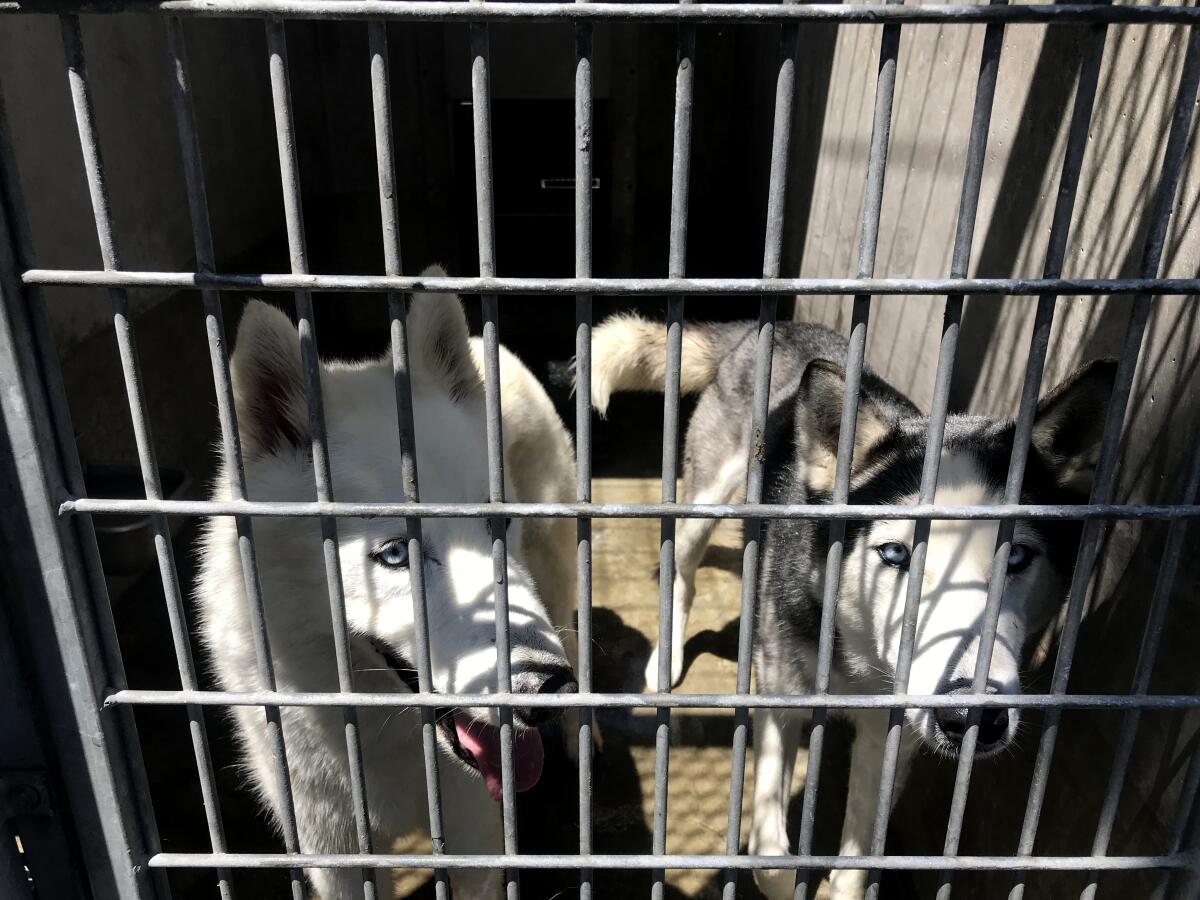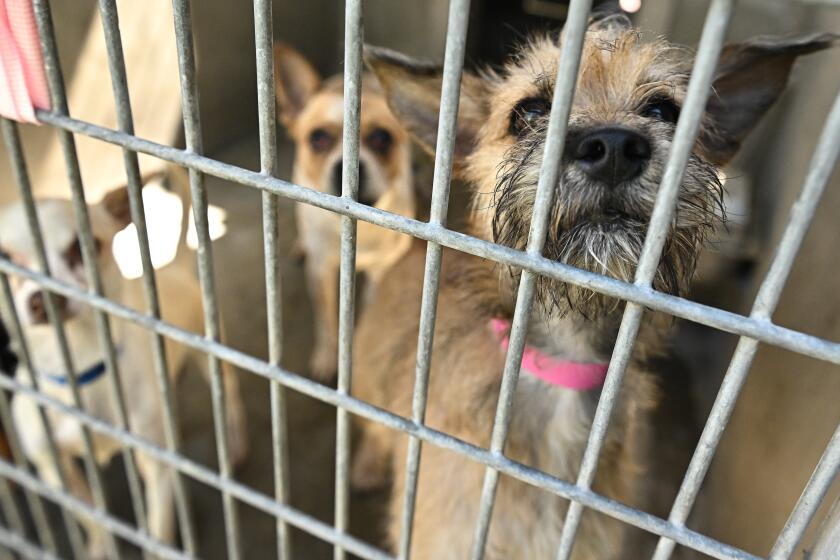Editorial: Shelter animals haven’t been walked in weeks. Let the dogs out now.

- Share via
Understaffed, underfunded and overwhelmed by the demands of caring for more than 1,000 dogs and about 600 cats, in addition to other creatures, the Los Angeles city animal shelter system is in crisis.
A report in the Los Angeles Times last month related accounts of dogs not being walked or let out of their cage-like kennels for weeks — sometimes even more than a month. Shelter volunteers spoke of filthy and overcrowded kennels. In the aftermath of the story, L.A. City Councilman Paul Koretz, who chairs the council’s Personnel, Audits, and Animal Welfare committee and has long been involved in city animal issues, held two hearings where numerous frustrated volunteers and former shelter employees shared their experiences.
There are plenty of problems at the Los Angeles Department of Animal Services, which runs the city’s shelter system, that contributed to the deplorable conditions. Consider the staffing. There are 300 employees and 64 vacant positions — some that are in the process of being filled, according to Annette Ramirez, the interim general manager. In any given week 40 people are absent because they have COVID or are isolating because they were exposed to someone who has COVID, Ramirez says.
But the department also depends on more than 1,000 active volunteers who walk dogs, play with the animals and prepare snacks for them, do laundry and interact with people looking to adopt an animal. Volunteers are expected to work a minimum of six hours a month, according to Ramirez. But some are there every day, doing what they can to make life a little better for the creatures consigned to a shelter and improve their chances of being adopted into what animal welfare advocates like to call a “forever home.”
If stories of overcrowding and inadequate care at L.A. city animal shelters have you wondering how to help, here’s how to volunteer and donate.
Should the department depend so heavily on volunteers? Ramirez believes that the six city shelters are part of the community and should always have volunteers involved. And the department doesn’t have the funding for a huge expansion. The current budget is about $27 million. “We are trying to determine how much money we need to do the things we want to do and that the community expects us to do,” said Ramirez, who is working on next year’s budget request.
Based on the paltry budget, city officials have essentially taken this department and the work of the staff and the volunteers for granted. Koretz has proposed increasing shelter funding possibly through a sales or parcel tax. That’s ridiculous — $27 million is a drop in the bucket of the city’s $11.8-billion budget. The city should increase the department’s funding, not pass it off to city residents — who are already paying higher taxes to support housing and services for homeless people. It’s wonderful to have volunteers engaged in this work, but the department should be not be relying on them for most of the enrichment services like walking and playing with the animals.
City officials are expected to extend the interim term of the current manager for a number of months. If not this mayor’s office, then the next one needs to take seriously the task of finding a seasoned animal welfare administrator to become general manager. Ramirez has two decades of experience in the department, but even she says she’s not ready to take on the permanent job.
Koretz’s committee is preparing a report on what bigger systemic changes should occur in the department. That’s good. But it’s not enough. This is an emergency. Dogs languishing in kennels can’t wait for a report to go through the city bureaucracy. They need to get out of their kennels — yesterday. Although leaving them in cages for weeks may not be abusive, keeping them from exercising and socializing is inhumane and bad for their health and adoptability.
L.A.’s animal services agency is understaffed and relies on volunteers. At one overcrowded shelter, dogs sit in kennels for weeks or months without being walked.
There are some immediate actions the shelter system can take to alleviate the suffering. First, it can bring dogs out of their cages every day in play groups, as is being tried out in the South L.A. shelter.
A pilot program will bring a dog enrichment coordinator from the nonprofit group Dogs Playing for Life to the Chesterfield Square shelter to show employees and volunteers how to manage dogs in outdoor play groups in the shelter yard and also assess their personalities, which helps with placing them in a play group as well as with a potential adopter. Another group, Paws for Life, will also supply a trainer to help. The shelters have done play groups off and on over the years according to Ramirez, but this will be a concerted and sustained effort to run play groups and show city shelter staff and volunteers how to do it.
The yearlong pilot program should be expanded to all the shelters to make sure all staff can work with enrichment experts on-site. And the department should consider other ideas such as contracting with third-party dog walkers until more staff can be hired.
The one good thing about the shelters is that they no longer kill animals for space. Most animals that go in get out alive. Although that is an achievement, simply keeping them alive is not enough for the animals entrusted in their care.
More to Read
A cure for the common opinion
Get thought-provoking perspectives with our weekly newsletter.
You may occasionally receive promotional content from the Los Angeles Times.












